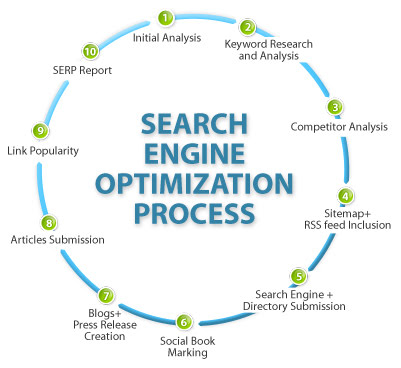In order to learn how to increase traffic from search engine rankings, and to drive traffic to your website, you need to understand how the concepts governing the way search engines work.
If you don’t understand these principles, and the system to incorporate them into everything you do online, you will not get the success you are seeking.
On the other hand, if you learn these principles, and utilize them in everything you do, you will quickly dominate the market you are in, and drive thousands of visitors to your site, turning your sales possibilities, into sales conversions.
What are the principles that lay the groundwork for search engine rankings? How do you improve your game? In short, they are:
1. Originality
2. Relevancy
3. Popularity
What does Originality, Relevancy and Popularity have to do with search engine optimization? I will explain it to you now.
Originality
In my opinion, this is one of the most important factors when thinking about search engine optimization. Originality basically means, having unique content. If you are copying everyone else’s content, why should search engines index your site? In simple terms, search engines are asking the question, “Is this the same piece of content all over the Internet?”. For example, if I took this article and posted it all over the Internet, to different article hosting websites, or article syndication websites, do you think that would help or hurt my SEO Rankings? Well this answer is two parts. If I wanted genuine traffic, and by genuine, I mean people that actually visit my site with the intention to purchase or sign up for my services, then the answer is – this method would hurt my SEO Rankings. Would I move up in the search engine results page? Yes. But those visitors would not be genuine. Now if I took this article, and re-wrote it in different ways, that would be another story. Something like that would actually help my rankings, and drive genuine traffic to my website.
Spreading unique content across the Internet is an important driving force to bringing traffic to your website. Making several unique versions of an article with the same information can actually help your SEO Rankings, especially when providing a backlink to the original article that you posted in your blog. The method of taking an original article, and changing the content enough to where search engines see it as unique is known as Article Spinning. Placing spinned articles all over the internet using Article Syndication services will improve your sites rankings.
Relevancy
Having a relationship to something is known as relevancy. For instance, say your website is about football, related content would include information about scores for teams, football related equipment, schedules for teams and information on local football events.
Content you include in your article about anything not related to football would not help your site, which in turn means that you would not rank in search engines. Search engines check your website for relevancy.
You need to be on topic, and stay on topic of your website for the area in which you are trying to target. Although relevancy is important to having your site rank higher in search engines, it alone will not ensure you a high ranking. Even if your content is highly relevant to the market you are trying to target, if there are no sites pointing to it, you will never rank high in search engines. Relevancy cannot work without popularity and originality.
One of the first steps to ensuring that your content stays relevant to the area you are trying to target, is to choose the keyword or keyword phrase that is relevant. For instance, when I was creating this article, I based my content around the title I chose, “Improve Search Engine Ranking”. So while thinking about the title, I write my content based upon that title, keeping it all relevant. When this article is crawled by search engines, relevancy will not be an issue. Originality will not be an issue either, because this is an article I wrote from my own mind that was not copied anywhere else. With that I bring you to the next principle in SEO, which is Popularity.
Popularity
Relevancy and popularity go hand in hand. Meaning that they both work off each other to provide your website with higher search engine rankings.
1. How many sites link to your site?
One way to measure popularity is by the number of sites that directly link to your site. YouTube is an excellent example of this.
YouTube is easily one of the most popular sites on the internet. Why? Because all the links and embed codes taken from YouTube, and then embedded on other sites like Facebook, Myspace, blogs, sales pages, websites, etc.. are automatic backlinks for YouTube where the video is originally hosted. So every time a video is shared by someone, or the video is embedded into a website, YouTube gains popularity because of the backlinks.
This method of distributing videos is an easy way for YouTube to get thousands of new incoming links. This is one of the main reasons YouTube ranks very highly on search engines. Based on popularity from the amount of backlinks they have. seomoz.org provides a tool called linkscape that is great for checking the amount of backlinks you have for your site. Also Google Webmaster tools has a method for checking backlinks.
2. The popularity of the sites linking you?
This is not something that you can control, unless you own and market some of the sites that link to you. For instance, XTELWEB owns and runs a number of blogs, some related to SEO & Website design, some that are not. Some of the sites that we run are www.iPadModSite.com , www.TampaSEOMarketing.com, and www.PrePaidGeeks.net. These are blogs that do very well for us and are all included in our network of sites.
The more incoming links to your site, the more popular your site is. It is very important to syndicate the content of your site, with a direct link to the content of your site, to as many sites as possible. An easy way to achieve this would be by utilizing tools like Google FeedBurner, Technorati, or through the use of WordPress Plug-ins such as TweetMeme or a Twello.


